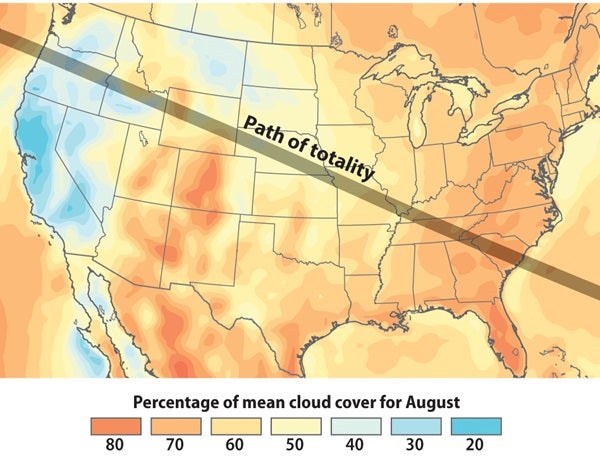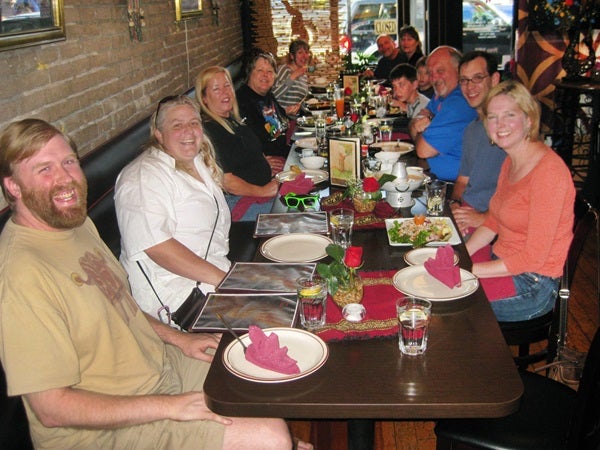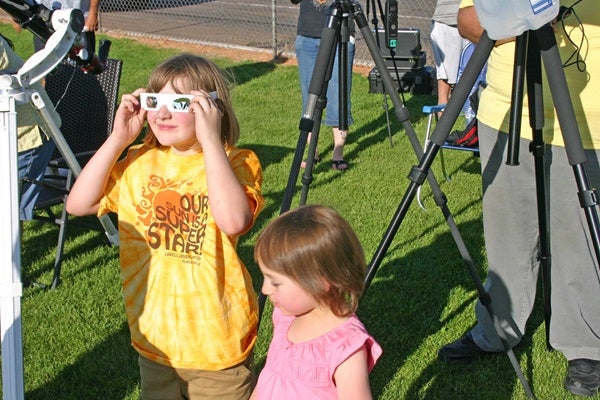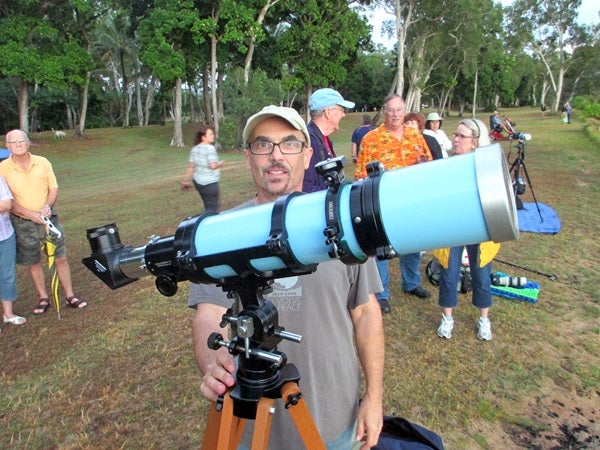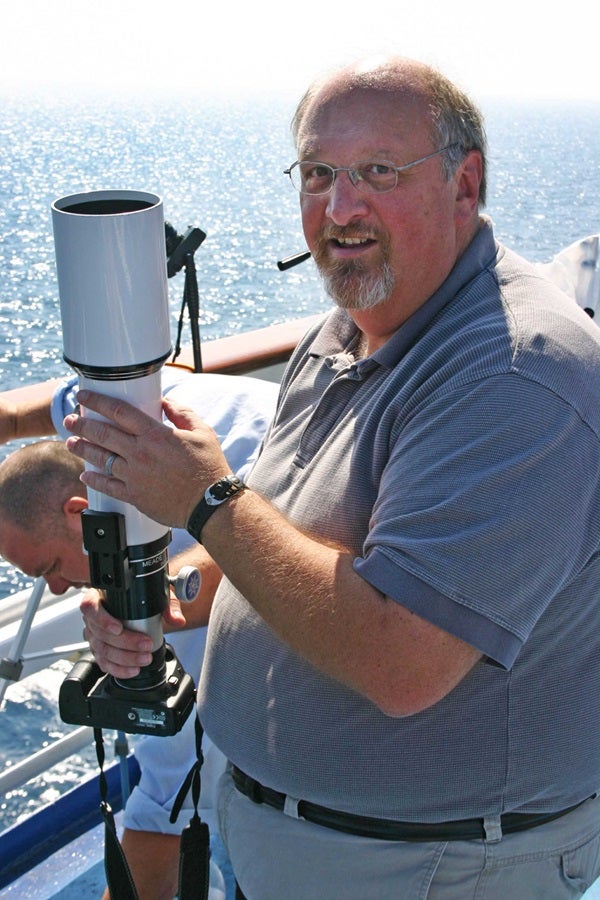This article originally appeared in the March 2016 issue of Astronomy.
1 Take eclipse day off
You may think a year and a half is a bit of a long lead-time, and, unless you work for a magazine called Astronomy, it may be. The point to consider is that August 21, 2017, may turn out to be the most popular vacation-day request in history. If not now, figure out the earliest date that makes sense for you to request August 21 as a vacation day, and mark it on your calendar.
2 Make it a long weekend
The eclipse occurs on a Monday. Lots of related activities will occur on Saturday and Sunday in locations touched by the Moon’s inner shadow. Find out what they are, where they’re being held, and which you want to attend, and make a mini-vacation out of the eclipse.
3 Watch the weather
Meteorologists study a chaotic system. Nobody now can tell you with certainty the weather a location will experience on eclipse day. So, don’t get too tied up in the predictions of cloud cover you’ll see for that date. Many don’t distinguish between “few” (one-eighth to two-eighths of the sky covered), “scattered” (three-eighths to four-eighths), “broken” (five-eighths to seven-eighths) clouds, and overcast. One online repository of knowledge I can recommend is Canadian meteorologist Jay Anderson’s Eclipser website (www.eclipser.ca).
4 Get involved
If your interests include celestial happenings and public service, consider volunteering with a group putting on an eclipse event. You’ll learn a lot and make some new friends in the process. Don’t worry if you don’t know eclipses inside and out. After a year of helping prepare, you will.
5 Attend an event
You’ll enjoy the eclipse more if you hook up with like-minded people. If you don’t see any special goings-on, call your local astronomy club, planetarium, or science center. Any person you talk to is sure to know of eclipse activities. Travel companies, like Astronomy’s partner TravelQuest, also offer trips that will let you experience the full social impact of the eclipse.
6 Stay flexible
Unless you’re certain August 21 will be clear, don’t do anything you can’t undo in a short time. For example, let’s say you’re taking a motor home to a site. You connect it to power, extend the awnings, set up chairs, and more. But if it’s cloudy six hours, three hours, or even one hour before the eclipse starts, you’re going to want to move to a different location. Think of the time you would have saved if you had waited to set up. Also, the earlier you make your decision to move, the better. Just imagine what the traffic might be like on eclipse day.
7 Concentrate on the sky
Totality will be the shortest two and a half minutes of your life. All your attention should be on the Sun. Anything else is a waste. And be considerate of those around you. Please, no music.
8 Watch for the approach of the Moon’s shadow
If your viewing location is at a high elevation, or even at the top of a good-sized hill, you may see the Moon’s shadow approaching along the ground from the northwest to the southeast. This sighting isn’t easy because as the shadow crosses the U.S., it is moving at a minimum of Mach 1.5 (1,151 mph, 1,852 km/h) and a maximum of Mach 3.5 (2,685 mph, 4,321 km/h). Another way to spot our satellite’s shadow is as it covers thin cirrus clouds if any are above your site. I hope you don’t experience clouds, but if you do, you’ll be surprised how fast the shadow moves.
9 Notice it getting cooler?
Point a camera that records video at a digital thermometer and a watch, both of which you previously attached to a white piece of cardboard. Start recording video 15 or so minutes before totality and keep shooting until 15 minutes afterward. The results may surprise you.
10 Get a filter in advance
Cardboard eclipse “glasses” with lenses of optical Mylar cost less than $2. Such a device — it’s not a toy — will let you safely look directly at the Sun anytime.
Another safe solar filter is #14 welder’s glass, which also will cost you about $2. Wanna look cool at the eclipse? Buy goggles that will hold the welder’s glass. I’ve even seen people wearing whole helmets. Either those or goggles serve one purpose — you won’t need to hold the filter, so you can’t drop it. The downside is comfort. August 21 will be warm across the U.S. and, in many locations, humid.
11 View the 360° sunset
A couple of times during totality, take a few seconds to tear your eyes away from the sky and scan the horizon. You’ll see sunset colors all around you because, in effect, those locations are where sunset (or sunrise) is happening.
12 Pee before totality
Yes, I could have phrased this more politely, but you needed to read it. This tip, above any other on this list, could be the most important one for you. Don’t wait until 10 minutes before totality to start searching for a bathroom. Too much is happening then. Make a pre-emptive strike 45 minutes prior.
13 No filter? You can still watch the eclipse
Except during totality, we never look at the Sun. But what if you’ve forgotten a filter? You can still watch by making a pinhole camera. It can be as simple as two pieces of paper with a tiny hole in one of them. (Try to make the hole as round as you can, perhaps with a pin or a sharp pencil.) Line up the two pieces with the Sun so the one with the hole is closest to it. The pinhole will produce a tiny image, which you’ll want to have land on the other piece of paper. Moving the two pieces farther apart will enlarge the Sun’s image but will also lessen its brightness. Work out the best compromise.
14 Bring a chair
In all likelihood, you’ll be at your viewing site several hours before the eclipse starts. You don’t really want to stand that whole time, do you? Are friends coming? Provide a chair for everyone.
15 Don’t forget sunscreen
Most people who go outside during the summer know this. Remember, you’ll be standing around or sitting outside for hours. You may want to bring an umbrella for some welcome shade. And if you see someone who has forgotten sunscreen, please be a peach and share. This is true solar safety.
16 Take lots of pictures
Be sure to capture images of your viewing site and the people with whom you shared this great event. If you have a camera that records video, I suggest you mount it on a tripod, position it about 25 feet (8 meters) away, aim it toward your group, and record from 15 minutes before totality to 15 minutes after. You’ll document all your reactions and the darkening and brightening of your site. (Note: If your camera automatically compensates for darkness, disable that feature.)
17 Regard totality as sacred
In the August 1980 issue of Astronomy magazine, author Norm Sperling contributed a “Forum” titled “Sperling’s 8-second Law” in which he tries to convey how quickly totality seems to pass. I’ll just quote the beginning here. “Everyone who sees a total solar eclipse remembers it forever. It overwhelms the senses, and the soul as well — the curdling doom of the onrushing umbra, the otherworldly pink prominences, and the ethereal pearly corona. And incredibly soon, totality terminates.
“Then it hits you: ‘It was supposed to last a few minutes — but that couldn’t have been true. It only seemed to last eight seconds!’ ”
18 Bring snacks and drinks
You’re probably going to get hungry — and in the summer in the U.S., you definitely will get thirsty — waiting for the eclipse to start. Unless you set up next to a convenience store, bring some light snacks and plenty to drink. Remember, even if you’re attending a sponsored event, there’s no guarantee water vendors won’t run out. Some places will have many times the number of people they expect. Don’t trust someone else with your comfort.
19 Remember that no one will have seen totality
If you’re planning an event or a family gathering related to the eclipse, consider this: Statistically, 100 percent of the people you encounter — to a high degree of accuracy — will never have experienced darkness at noon. You will be the expert.
20 Invite someone with a solar telescope
If you’re hosting a private shindig, make sure someone brings a telescope with a solar filter. While it’s true that you don’t need a scope to view the eclipse, having one there will generate buzz, and it will help Sun-watchers get the most from their experience. And you (or the scope’s owner) can point out sunspots, irregularities along the Moon’s edge, and more. You can even take a look at Venus.
21 Experience totality all by yourself
The 2017 eclipse, plus the events leading up to it, will combine to be a fabulous social affair. Totality itself, however, is a time that you should mentally shed your surroundings and focus solely on the sublime celestial dance above you. You’ll have time for conversations later.
22 Schedule an after-eclipse party or meal
Regarding No. 21, once the eclipse winds down, you’ll be on an emotional high for hours, and so will everyone else. There’s no better time to get together with family and friends and just chat. Fun!
23 Record your memories
Sometime shortly after the eclipse, when the event is still fresh in your mind, take some time to write, voice-record, or make a video of your memories, thoughts, and impressions. A decade from now — or, more specifically, just before the next U.S. total solar eclipse in 2024 — such a chronicle will help you relive this fantastic event. Have friends join in, too. Stick a video camera in their faces and capture 30 seconds from each of them. You’ll smile each time you watch it.
24 Don’t be in a rush afterward
Traffic, or the new term I have for what we all will experience on eclipse day — gridlock — will be horrendous after the event at some locations. And the sooner you try to leave, the worse it will be. Relax. Let the part of the eclipse between third and fourth contacts play out. Many people will view this portion as “what we saw before totality, but in reverse.” For this section, however, all the tension will be gone.
25 Don’t photograph it
This tip may sound strange coming from the photo editor of the best-selling astronomy magazine on Earth. But I’ve preached it to thousands of people whom I’ve led to far-flung corners of our planet to stand under the Moon’s shadow. True, few of them have thanked me afterward.
But I can tell you of upward of a hundred people who have told me with trembling voices, “I wish I’d followed your advice. I spent so much time trying to center the image and get the right exposures that I hardly looked at the eclipse at all.” How sad is that?
And here’s another point: No picture will capture what your eyes will reveal. Trust me, I’ve seen them all. Only the top 0.1 percent of photographers ever has come close. And you — no offense — with your off-the-shelf SLR or point-and-shoot pocket camera are not one of them.
Finally, why would you even consider looking down and fiddling with a camera when you could be looking up at all that heavenly glory? This eclipse will — at maximum — last 160 seconds. That’s it, friends. If your camera isn’t doing what you think it should, you’re going to lose valuable time adjusting it. There will be plenty of pics from imagers who have viewed a dozen of these events.
So just watch. Watch your first eclipse with your mouth agape, where your only distraction is occasionally wiping tears of joy from your eyes. I promise that you will not be disappointed.
Now, relax
Once you come up with a course of action that lets you stay flexible with some of the details, you’ll feel a lot better as August 21, 2017, approaches. And the family and friends that you include surely will say, like Bill Murray’s character Dr. Peter Venkman in the movie Ghostbusters, “I love this plan. I’m excited to be a part of it!”

